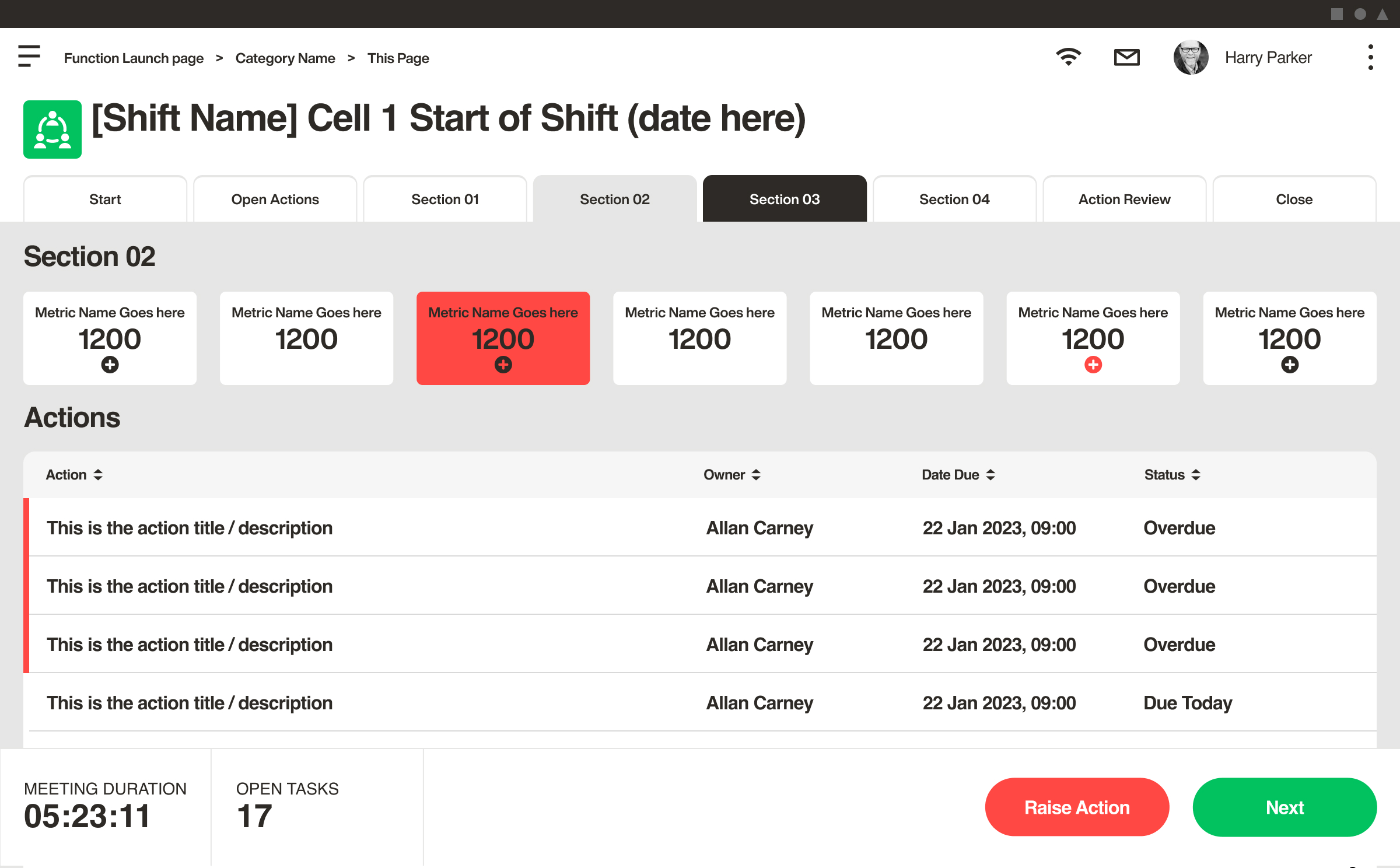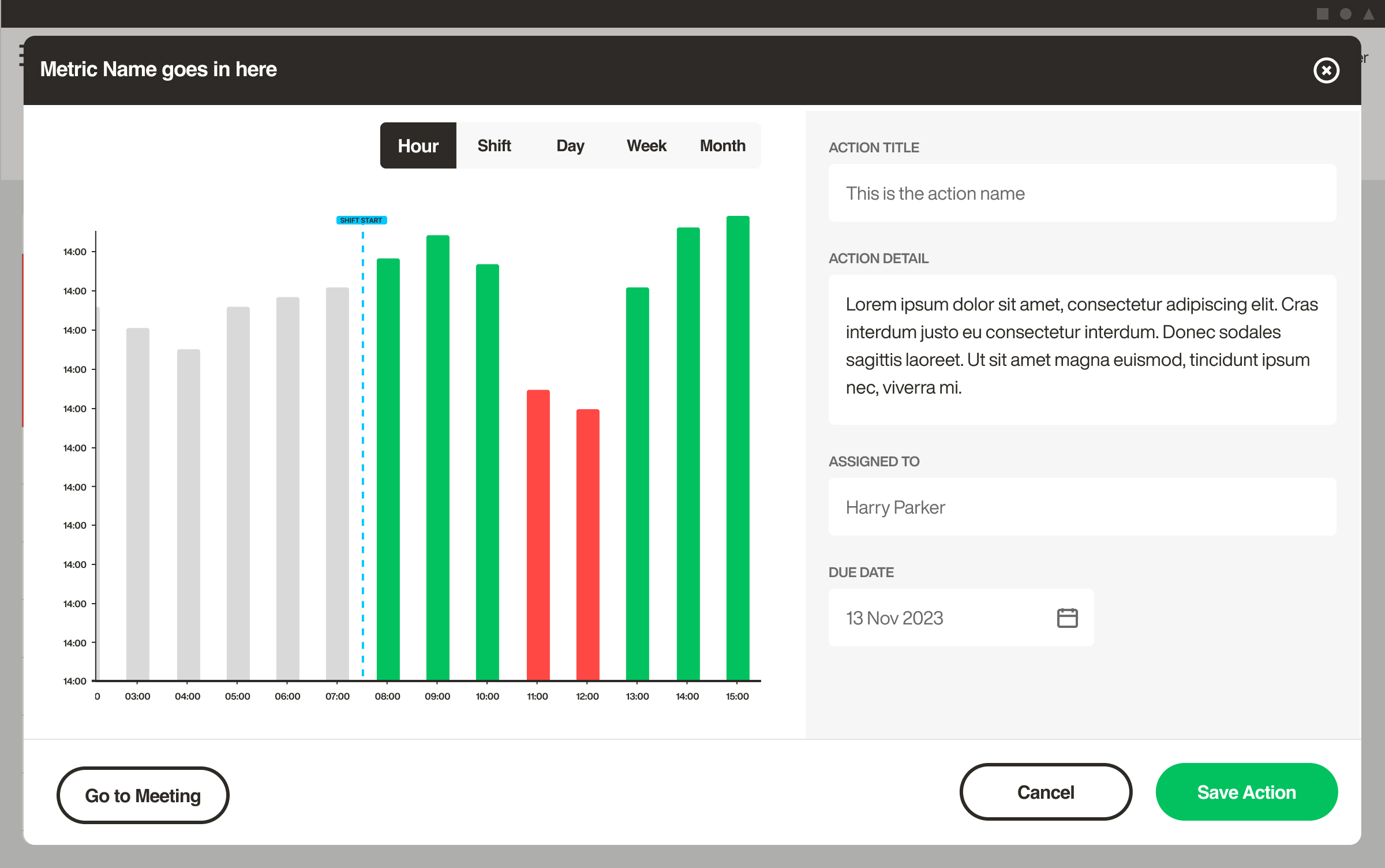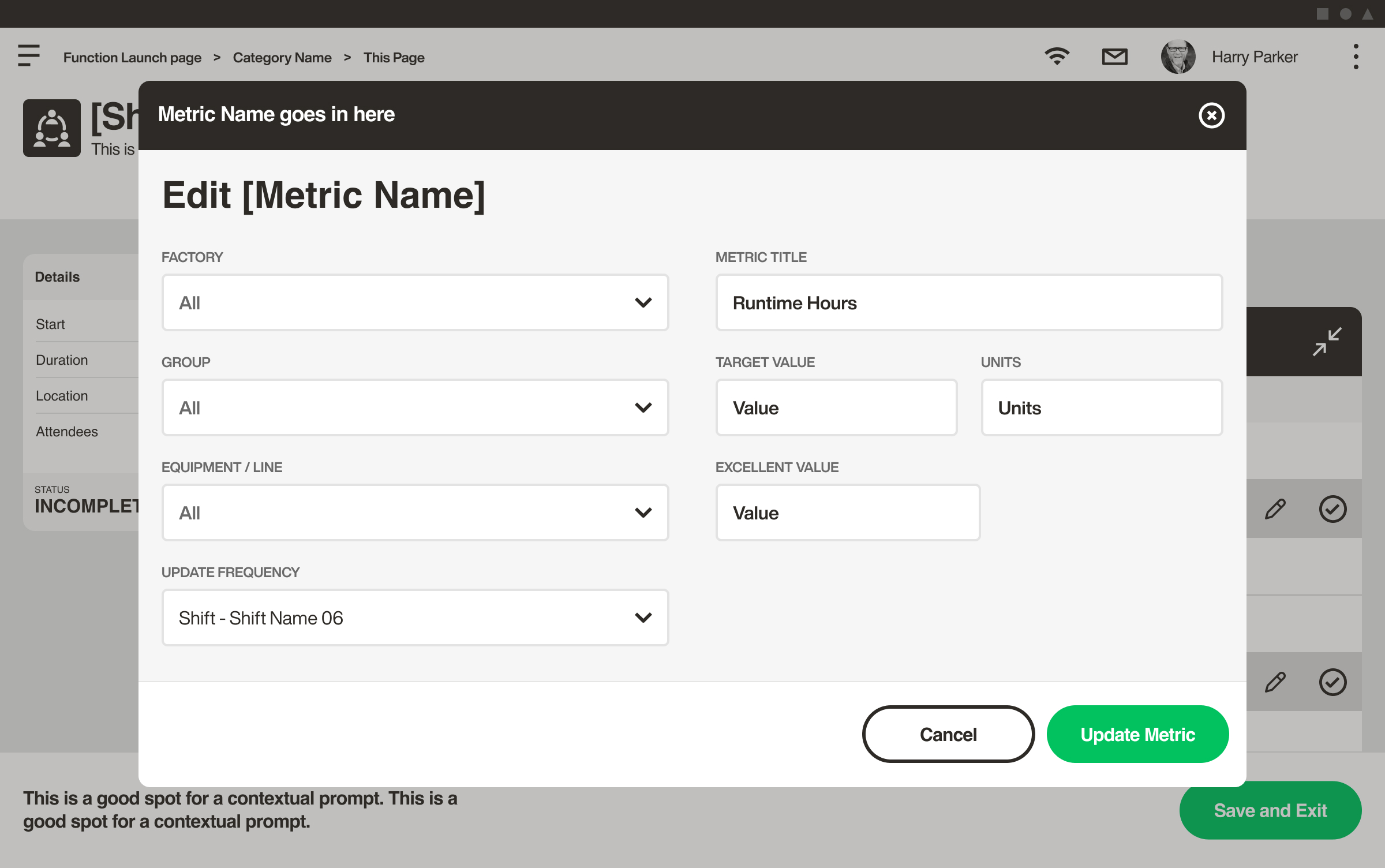OneApp
As a manufacturing performance platform, to truly go beyond data capture, surface insights in real time and provide actionable insight for continual improvement, Thingtrax neeed to allow use directly at the point of production - the Gemba. To do this I was challenged to design a fully responsive app, designed for Tier 1 Factory workers.
ROLES
UX Design
UI Design
Product Management
Strategic Approach
To approach this green field project, I created a set of design guidelines that combined the best of World Class Manufacturing (WCM) techniques and the best of modern UX practices:
1. Interact with Data
Lean Manufacturing techniques celebrate the 'Power of the Pen'. Without the natural, tactile interaction of pen an paper, techniques and affornaces must be used to plut the user in control of the data and have it respond in such a way as to promote furhter engagement.
2. The Best of Lean
Leaning from the practices of Lean... not just in terms of current digital methods, but the traditional, physical practices developed for the Toyota Production System (TPS) and in use - physically - within most manufacturing environments. In order to truly bridge the gap between physical and digital, we must pay respect to both environments, and their native users.
3. 1,3,10
Our operational environment is as hazardous as it is varied, a user must recognise - or be alerted that - that there is an issue within 1 second, understand where that issue is within 3 seconds, and have started work on a solution within 10 seconds.
Responsive Framework
I created a responsive framework, into which we could repeatedly place responsive components. A data intensive platform, having a concise, focussed component set minimises the training required and subsequent cognitive processes required to interpret insight efficiently. This allows a user to more rapidly work on problem solving - and value adding - activities.
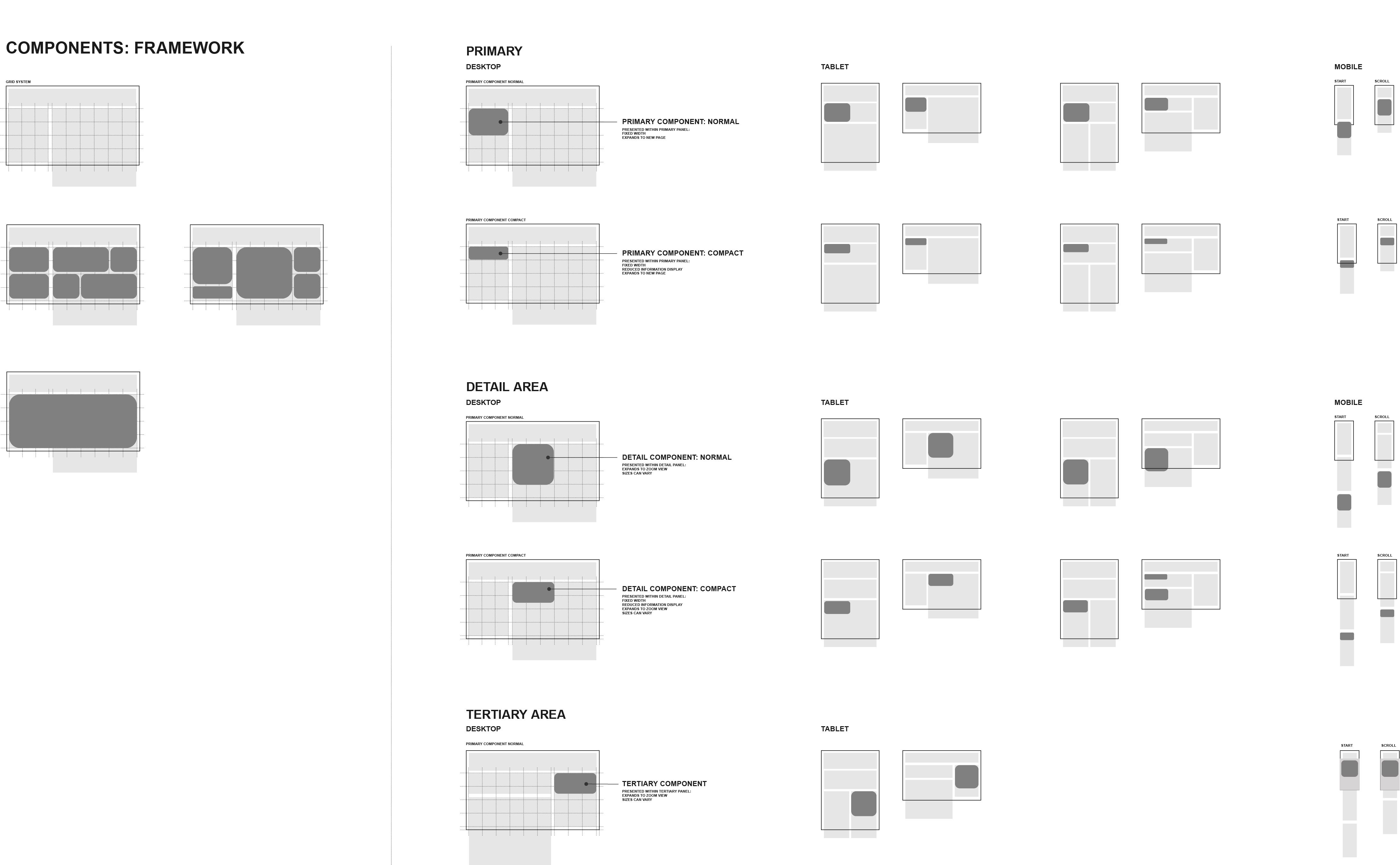
Stage 1
I used a simple colour scheme to highlight any abnormality and bold typography to communicate vital data to users at the Gemba. This was very much welcomed by our existing user base (both english and non-english speaking), rapidly acheiving our defined acceptance metrics. A live installation with an international client identifed parts of the interface that were deemed tautological by operators, which we were able to address immediately in an iterative development cycle.
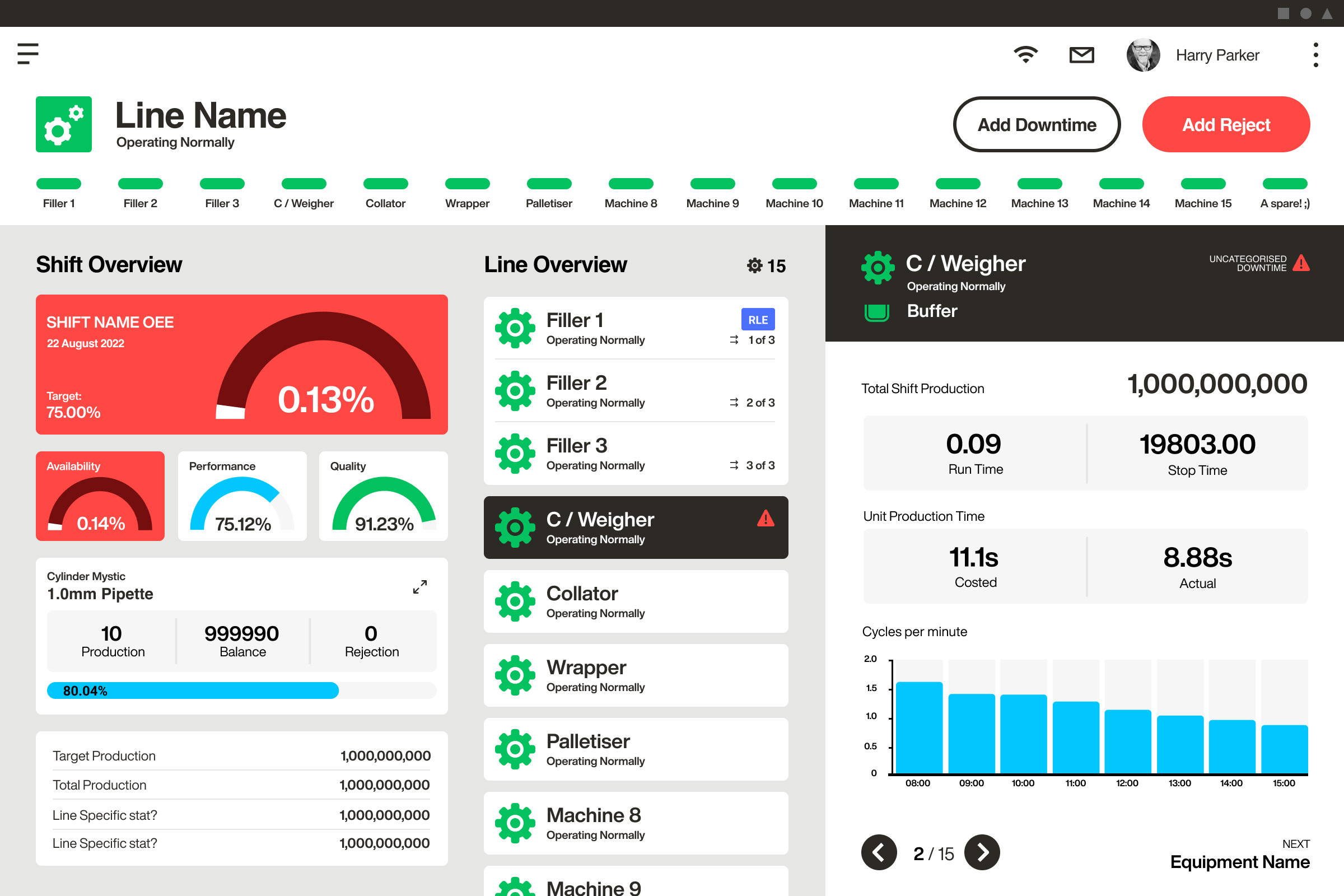

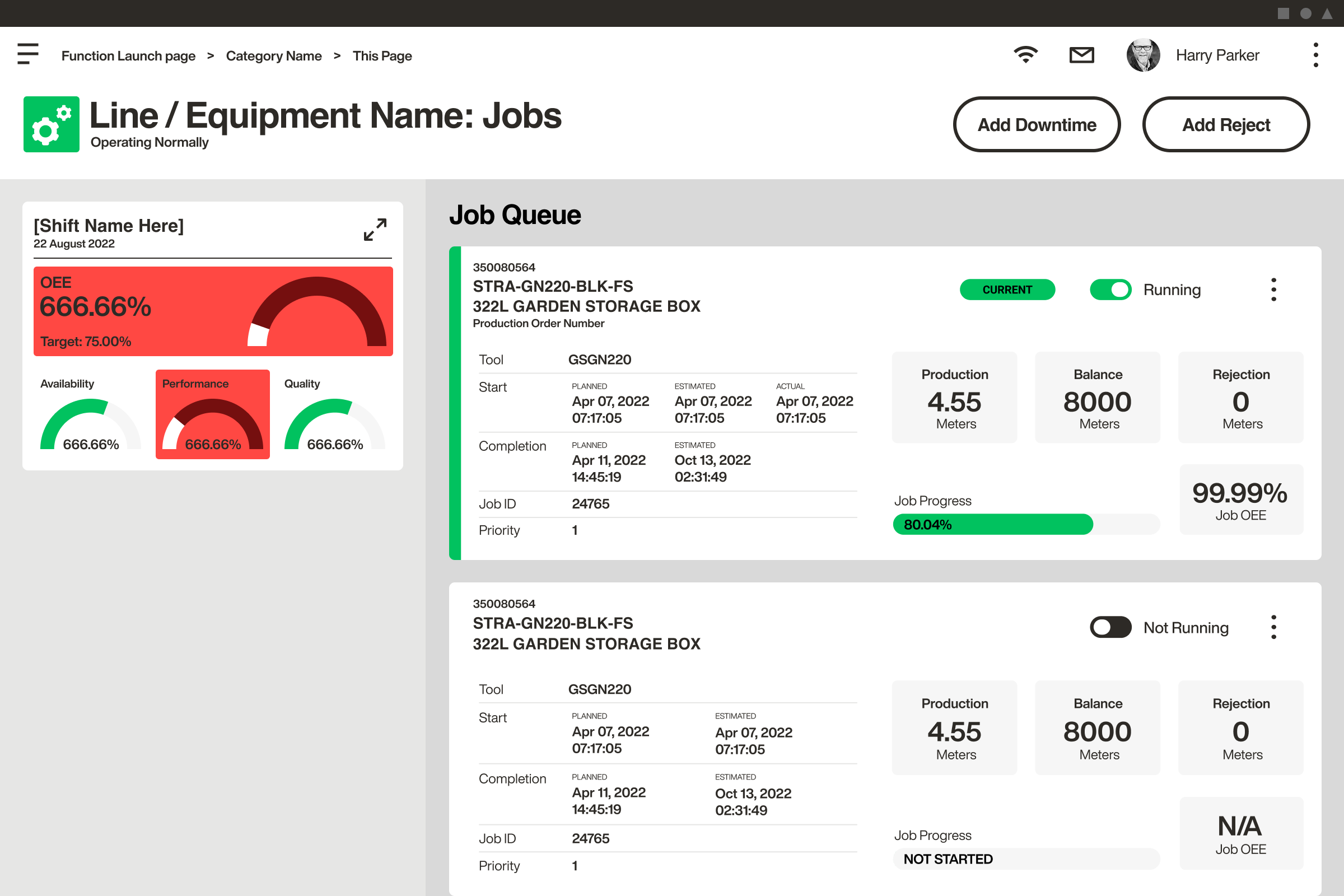
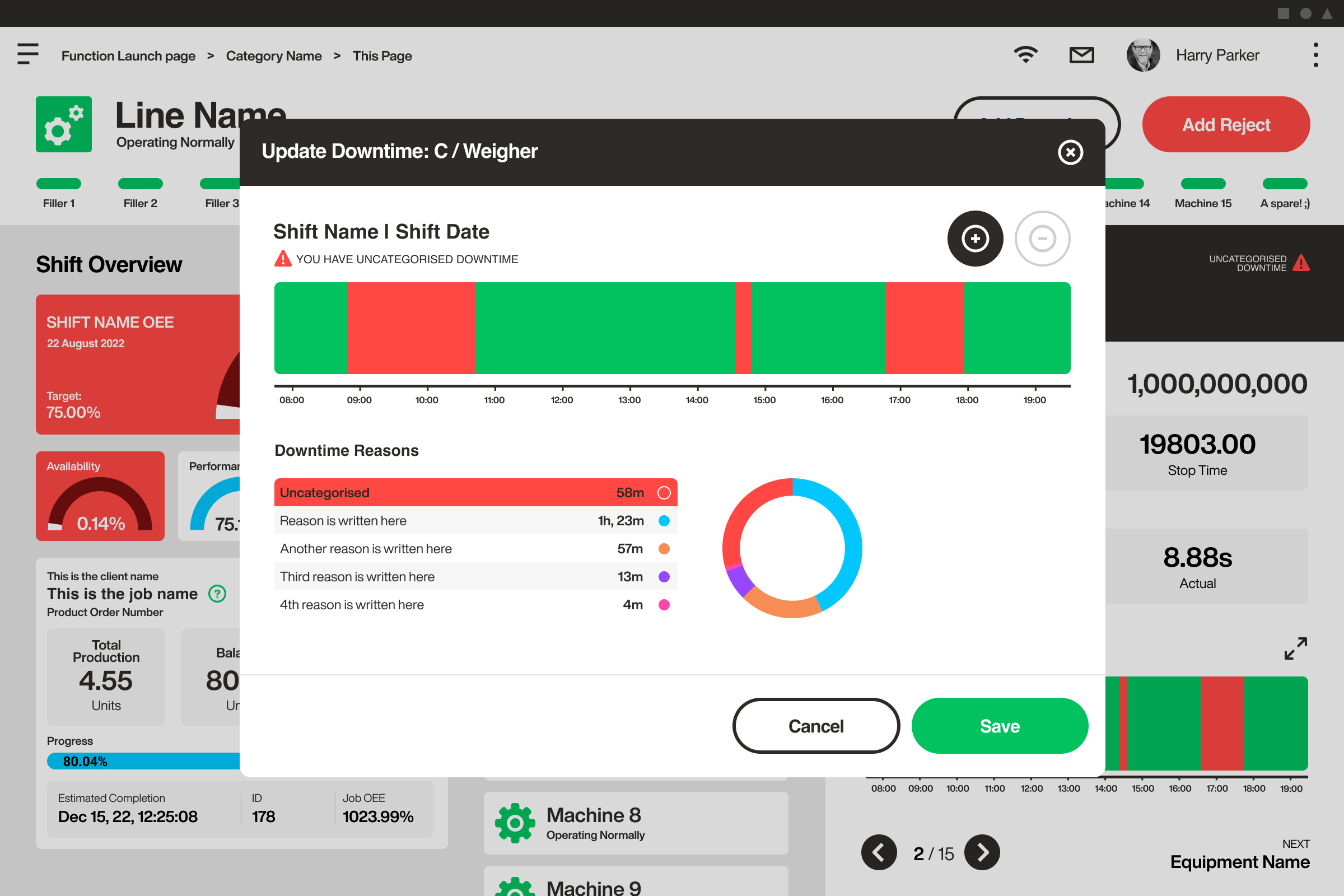
Stage 2
The second iteration of this feature allowed us to add significant technical capability as well as presenting more information for our operators to understand their current production capabilities. We were able to provide more insight through a tablet based, touch screen interface as presented here than our entire web portal. Happily, this was also deemed to be more user friendly also as we saw a 75% reduction in the training requirement needed to onboard our users.
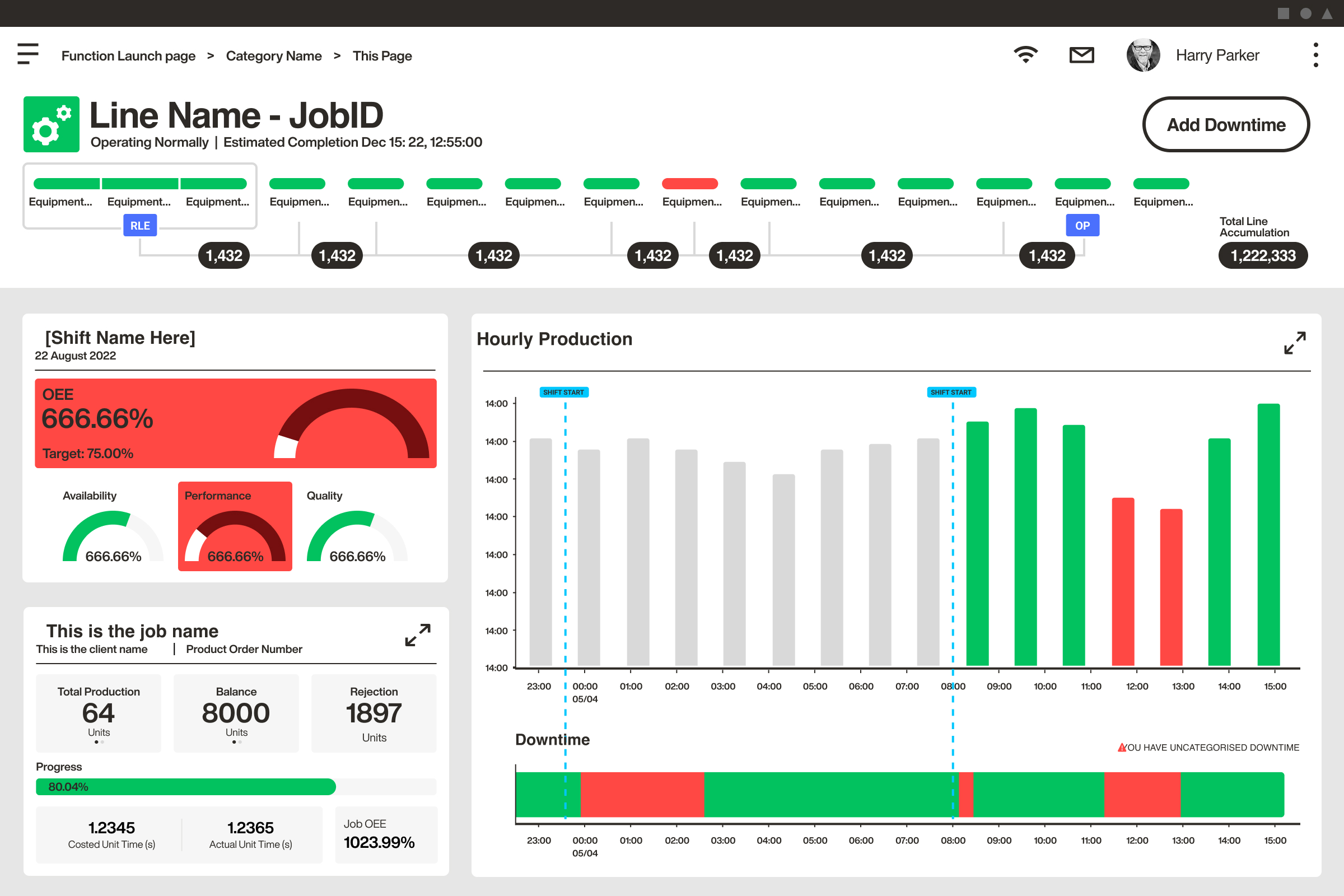

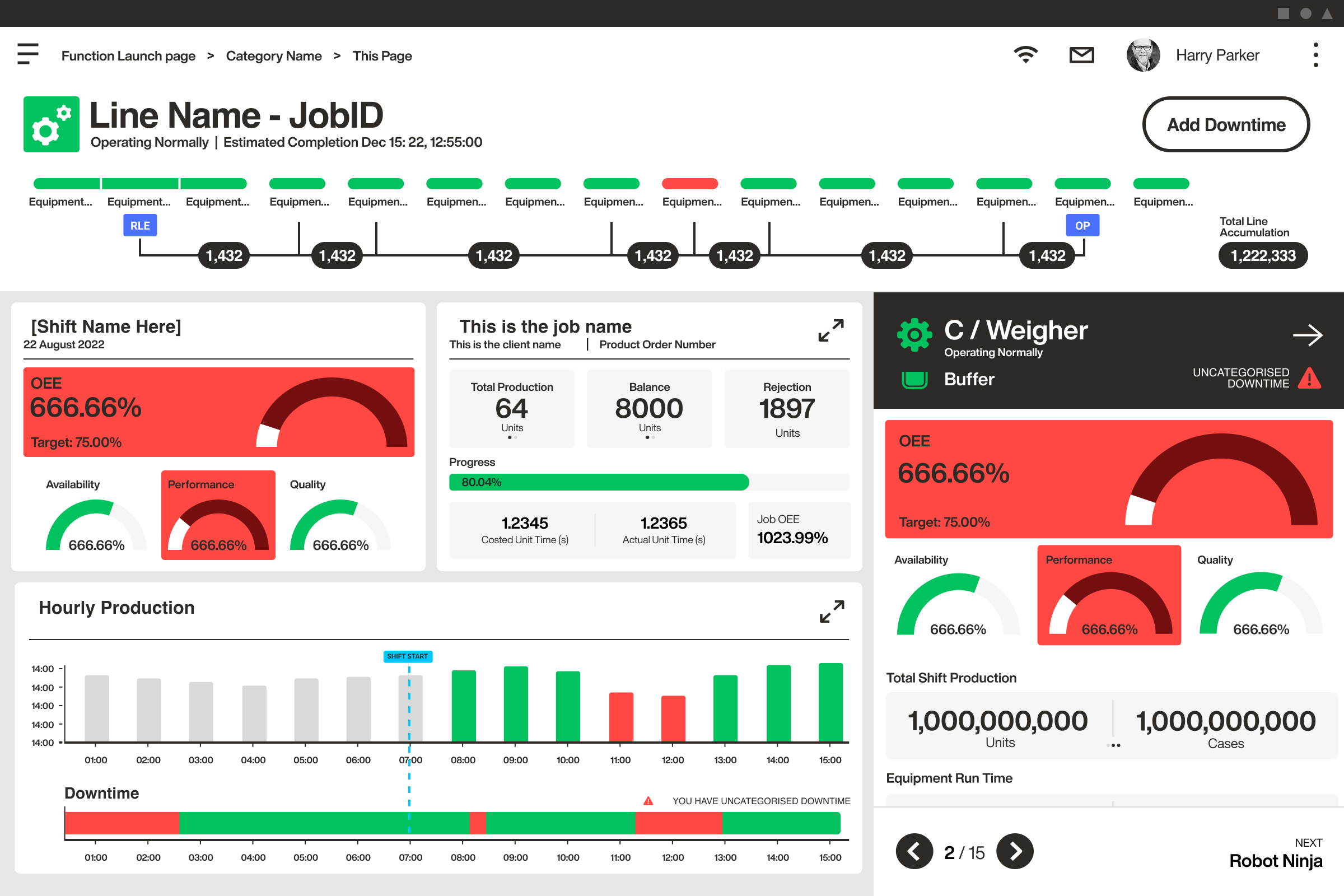
Stage 3
The third generation of this platform saw the UI and UX further, based on user feedback, to boost visual clarity, as well as reducing the technical requirement to develop the interface.
The colour usage was optimised to meet WCAG guidelines, and iconography was introduced to ensure that the 8% of the workforce that suffered from red / green colour blindness were easily able to interpret on screen performance indicators, without reducing the visual clarity experienced by those with normal sight, and who were also accustomed to the traditional applicaiton of red and green markings in signage.

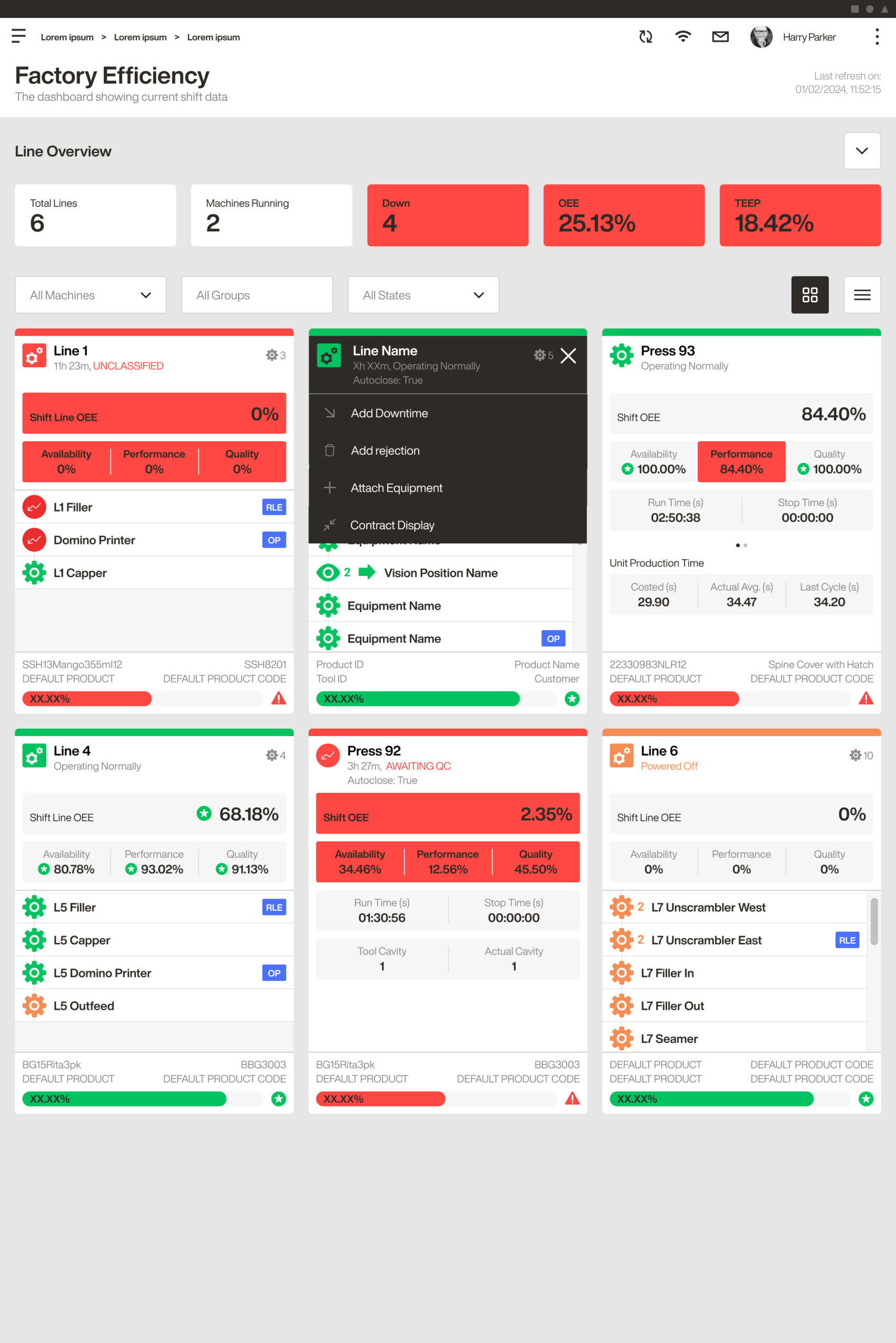
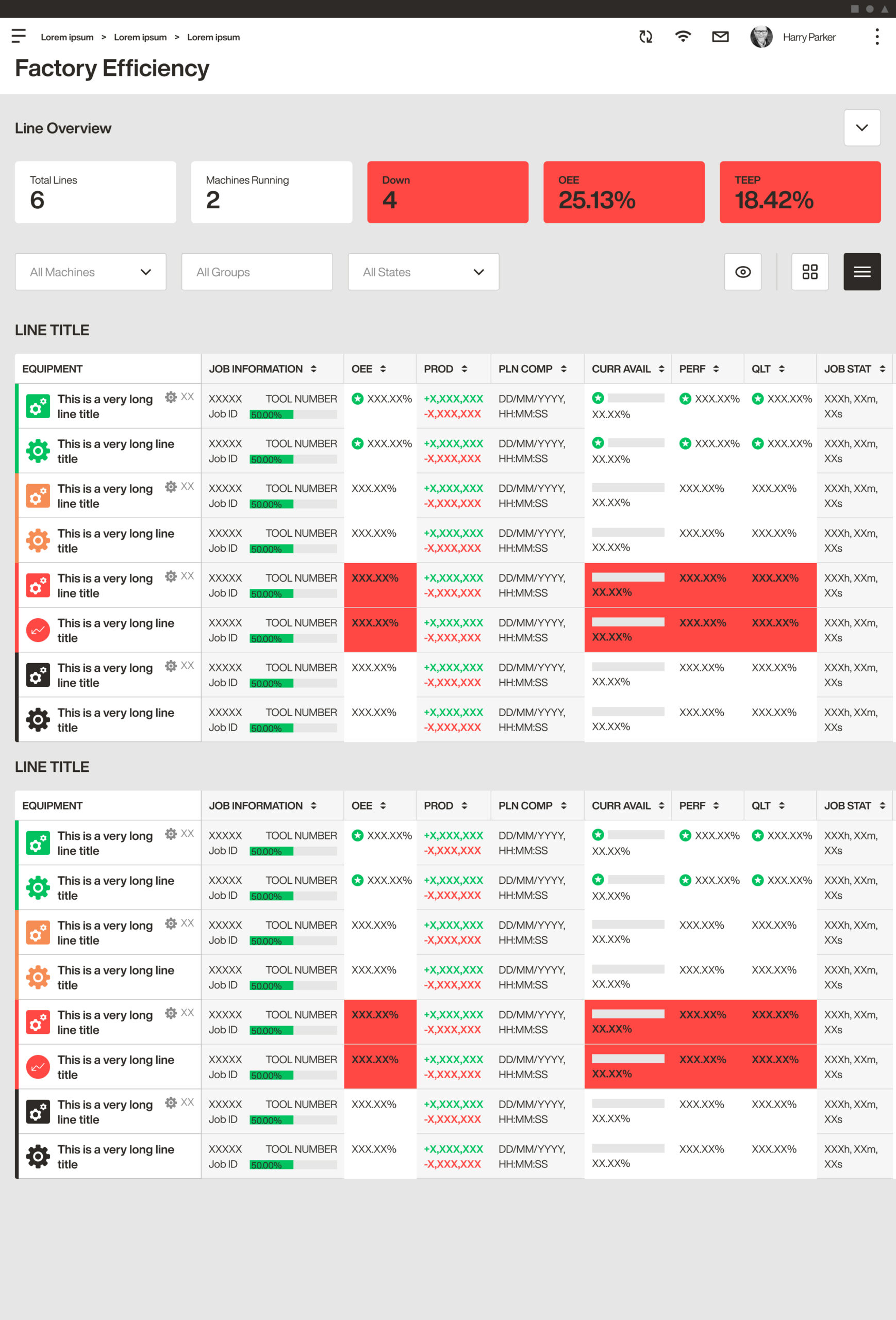
Documentation and Assets
All asserts were created in Figma, documented as user flows and user prototypes for both user testing and development by our offshore team.
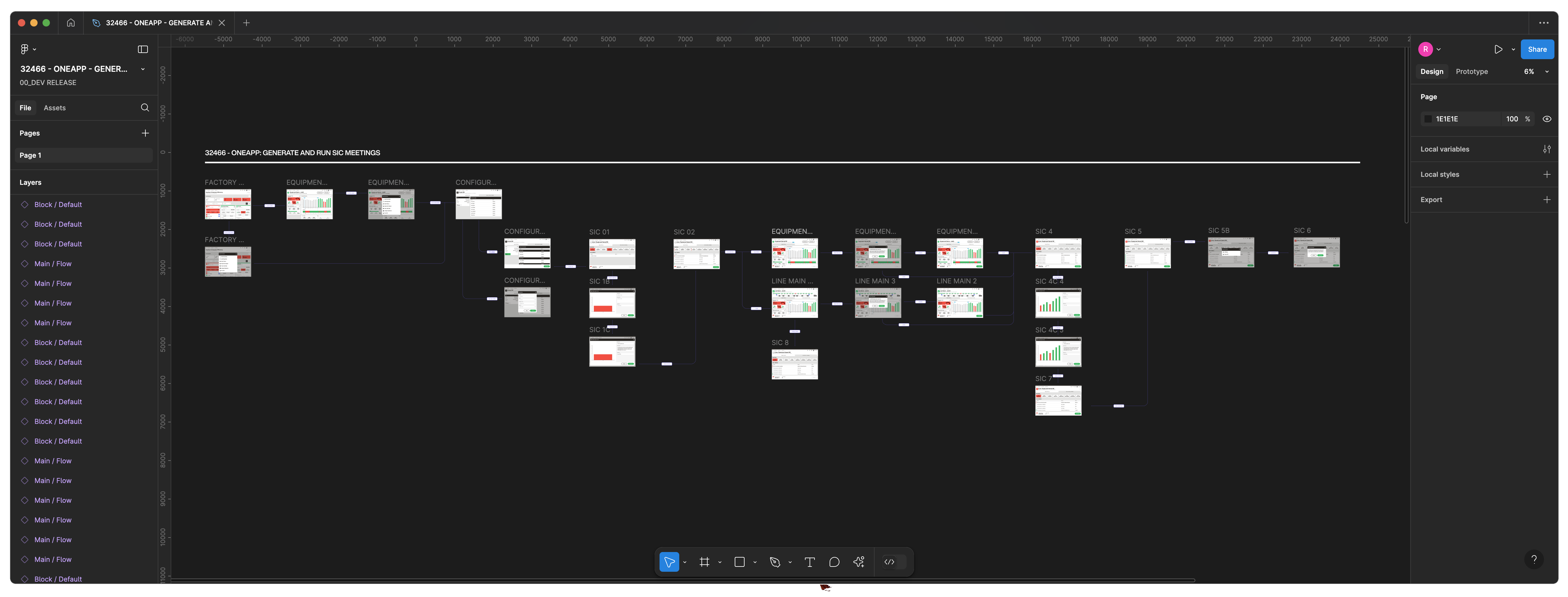
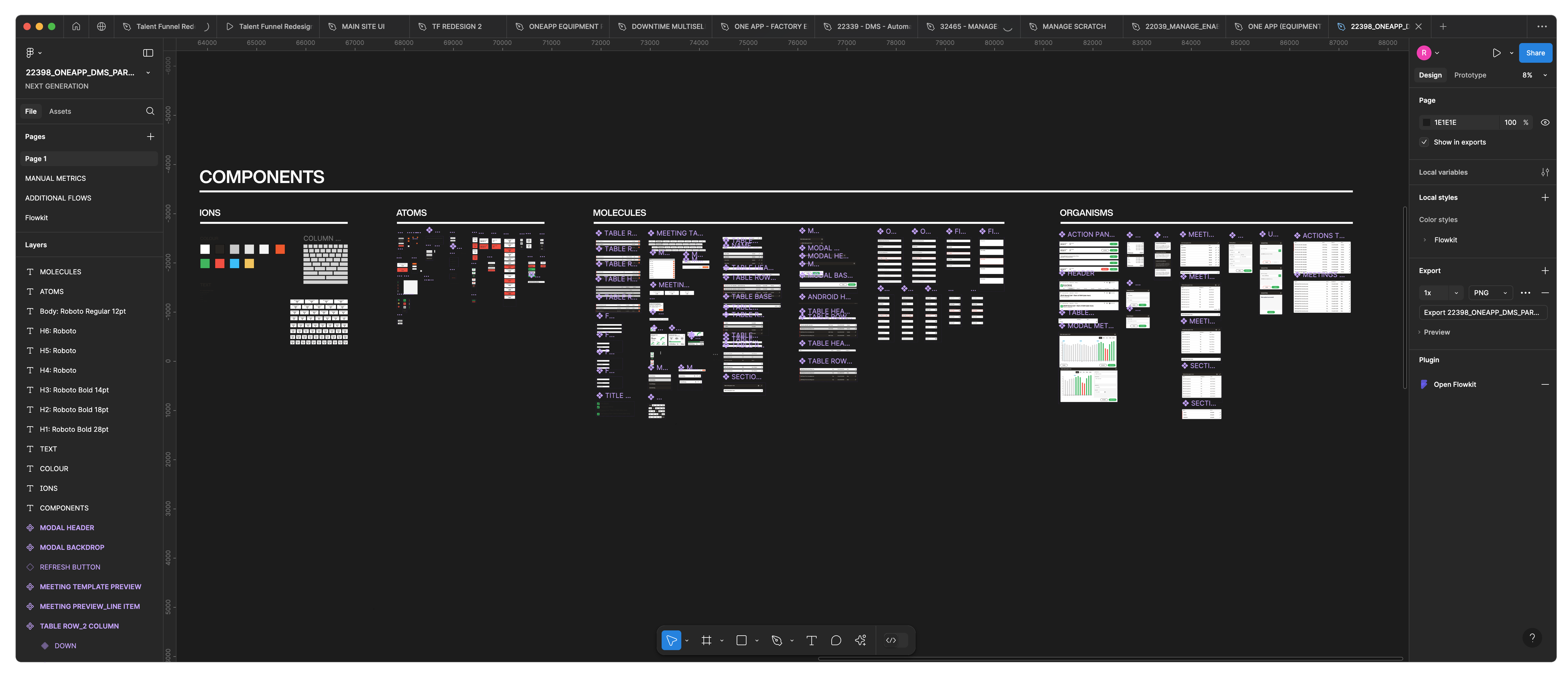
Manage
A second significant feature of OneApp was a system to facilitate daily team meetings as defined in traditional WCM (which led to the 'Stand-Up' experienced by most of us working in the digital industries). The fully responsive design allows users to follow meetings either remotely on a mobile device or on a large interactive touch screen with all members present to hold each other to account, a true bridge between a modern and traditional / physical and digital methodolgies. These meetings also provide the collaboration and accountability required to fully engage users with this new platform in order to realise maximum value.
